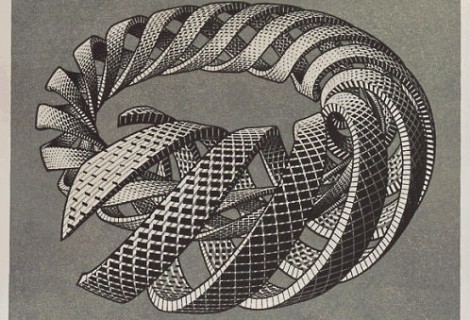on distinction
Trying to summarize:
The drawing of a distinction is a formative act. Drawing a distinction FORMS the space, constellates the infinitely possible unknown into spaces which are shaped by the particular WAY in which the distinction is drawn. The resulting spaces can not help but take the complementary shape of the distinction that defines them.
The drawing of a distinction is an INformative act. Drawing a distinction INFORMS the observer to distinguish the space like this. The resulting shape of any possible knowledge within the space cannot help but be informed (formed-in) by the particular way in which the distinction is drawn.
The distinction is an epistemological act that creates itself, and in so doing, is also the creation of the space in which the distinction occurs, as well as of the observer who makes the distinction.
There are levels of distinction; distinctions can be made about distinctions, and distinctions can be made about those distinctions…
Distinctions are atemporal and aspatial. They are the primitive act. The distinction between the distinction, the space, and the observer are all formally equivalent, just as the three interior angles of a triangle are all formally equivalent. In other words, they are interchangeable in any process that specifies ANGLE.
The only process that specifies distinction, space, and observer is DISTINCTION. The form (which is the same thing as the LAW of form) is an ouroboros.
Consciousness is the consciousness of distinction. That is to say, consciousness is distinction; it cannot be other than consciousness of distinction. Therefore consciousness is co-extensive with all distinction. What is distinguished is conscious of its distinction; this is why there is distinction; this is why there is consciousness.
Time is a higher order distinction that requires recursivity. It is a distinction about a distinction. Time is dependent upon the oscillation of distinction between two states made by that distinction. Time is the injunction to cross the boundary between the states, and once crossed, to cross again. The crossing is atemporal. Only the distinction of the crossing is temporal. The distinction of the crossing of the distinction is time.
<—————-distinction—————->
Now, I have no idea if any of the above is sensible or insensible <crossing boundary: its sensibility or insensibility is only possible on the basis of the distinction as such. In itself it is neither sensible nor insensible, but what it would be if it could> but it has raised some questions for me:
Is distinction ONLY binary? Is distinction always between this state and that state, that is, between one and another? Is it possible to distinguish not just between one:one, but between one:many, between one and another+another+another? In other words is this a binary reductionism? <crossing boundary: yes, if this binary distinction is made. now make another distinction.>
Okay, but what about the, um, distinction in quantum mechanics of the possible eigenstates of the wave function? There are an infinite number of possible eigenstates for any given system (even the simplest), and they must ALL be taken into account (their probabilities must be worked in to the equation). Then, out of the whole field of possibilities, ONE is observed. In the observation, all the other possible values have a probability of zero, while the observed value has a probability of one. This sounds an awful lot like the idea that the fundamental act of distinction creates the space and thus the values of any distinction in the space thus created. Does this have any validity, either as an analogue or at least a metaphor? <X: Do you distinguish it as such?>
…
Okay I have another question. What happens if we DON’T DISTINGUISH? I mean, we don’t un-distinguish and we don’t distinguish. Without distinction… what happens? Is this (GSB language) a marked empty mark?
Crap! And can making a distinction of a distinction actually be the same as not making a distinction in the first place?
Please, anyone, help?!
<X: >





